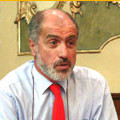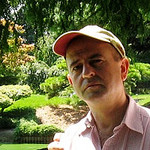
 |
 |
 |

 |
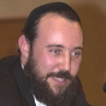 David DavidSciunnach, rabbino |
| “Affinché racconti alle orecchie di tuo
figlio e del figlio di tuo figlio, come Mi sono preso gioco dell’Egitto
e i Miei segni che ho operato in loro, e riconoscerete che Io sono il
Signore” (Shemòt 10, 2). Rabbì Yeoshua di Ostroba, autore del libro
Toledòt Adam, lega l’inizio di questo verso “Affinché racconti alle
orecchie di tuo figlio e del figlio di tuo figlio” con ciò che è
scritto alla fine “e riconoscerete che Io sono il Signore”. In base
alle sue parole, possiamo trarre come insegnamento che se riusciamo a
imprimere nel cuore dei nostri figli e nelle generazioni future una
consapevolezza della grandezza di Dio in questo mondo, saliremo anche
noi di livello spirituale e nella Yediàt ha-Shem - consapevolezza della
presenza di Dio, e si adempirà quindi in noi “e riconoscerete che Io
sono il Signore”. |
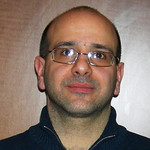 David DavidAssael, ricercatore |
| L’ultimo giorno dell’anno (civile) ci ha
regalato il controdiscorso di capodanno di Beppe Grillo. Questa, che
potrebbe apparire una goliardata di un comico attempato e annoiato, è
invece un’ulteriore tappa di una strategia, che, non sfociasse nel
ridicolo, sarebbe da definirsi eversiva. Il grande guru occulto,
Gianroberto Casaleggio, quello che pare abbia saltato la lezione
liceale dedicata a Socrate e alle sue critiche alla democrazia diretta
e che non disdegna di strizzare l’occhio ai peggiori ambienti
antisemiti per assecondare la sua teoria antisistema, ha da tempo in
mente di delegittimare i media tradizionali per accreditare il blog del
suo utile idiota come un canale di verità. Purtroppo, il blog è saltato
causa (così dicono) troppi contatti. Quando si dice che le teorie
devono camminare sulle gambe. |
 |
| Una rete per la solidarietà |
| Favorire la creazione di una rete di
solidarietà, sviluppare l’assistenza secondo un modello professionale,
fornire supporto a chi ne ha bisogno. Sono questi i capisaldi del
progetto di servizio sociale territoriale elaborato dalla Commissione
Servizi sociali dell’Unione delle Comunità Ebraiche Italiane,
presieduta dal Consigliere UCEI e presidente dell’Associazione medica
ebraica Giorgio Mortara. |
| Leggi |
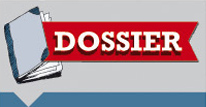 |
| Progetti di futuro |
| “Le due parole centrali della Torah - ha
scritto rav Benedetto Carucci Viterbi sul Portale dell’ebraismo
italiano, moked.it - sono darosh darash: ripetizione rafforzata di
cercare; ma anche di studiare e di interpretare. Il cuore della Torah è
dunque nello studio e nel tentativo di comprendere. E nessuno si può
sottrarre a questo compito fondante: neanche Mosé il nostro maestro,
colui che cerca al centro della Torah”. Per l’ebraismo, come spiega il
rav, lo studio è uno dei pilastri della vita ebraica e nessuno può
sottrarvisi. Progetti di futuro è il titolo del dossier sul numero di
Pagine Ebraiche attualmente in distribuzione, dedicato alle prospettive
che si aprono ai giovani dopo la scuola superiore. |
| Leggi |

| accadde
domani Al lavoro sul futuro Il primo giorno dell'anno civile, una delle sole cinque giornate in cui i quotidiani italiani non sono nelle edicole, vede come di consueto la redazione del Portale dell'ebraismo italiano regolarmente al lavoro. Questo notiziario datato 1 gennaio apre un 2014 che sarà denso di novità e ci auguriamo di evoluzioni per gli strumenti di informazione creati dall'Unione delle Comunità Ebraiche Italiane e diretti a tutta la pubblica opinione. Oggi il lettore troverà l'inconsueta pubblicazione di un testo in inglese, l'intervento, già anticipato da Pagine Ebraiche di dicembre, del rabbino capo di Roma Riccardo Di Segni riguardo al delicatissimo problema di una minacciosa politica di cristianizzazione della Shoah. Abbiamo voluto fosse pubblicato anche in inglese, ormai l'yiddish, il linguaggio trasversale dei tempi nostri, perché riteniamo che molte idee e molti valori degli ebrei italiani debbano essere portati fuori da confini nazionali e culturali ormai privi di senso, pericolosi per le limitazioni che trascinano con loro, incomprensibili per le nuove generazioni. Ci scusiamo in partenza per eventuali imperfezioni lessicali con i lettori che padroneggiano la lingua meglio di noi. Ci scusiamo con i lettori che non sono in grado di leggere l'inglese. Speriamo che tutti in ogni caso possano apprezzare il rischio che la redazione si assume avviando questo esperimento. In futuro troveremo una collocazione meglio appropriata per i testi in inglese che ci ripromettiamo di realizzare. Da domani, intanto, con il ritorno dei giornali in edicola, un rinnovato notiziario quotidiano nelle prime ore del mattino aiuterà il lettore a orientarsi meglio nella grande complessità di quanto appare sui mezzi di comunicazione. La redazione resta in ascolto per conoscere le vostre impressioni e i vostri suggerimenti. In una stagione dove abbonda il teppismo della parola roboante, e la prepotenza di coloro che alzano la voce per negare il confronto e il valore della diversità, imparare ad ascoltare resta ancora la maggiore ambizione e la migliore conquista per tutti i giornalisti. gv |
| the
limits of dialogue A symphony that sounds wrong 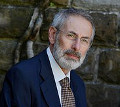 On
the 15th of November the Osservatore Romano published an interview
with Rabbi David Rosen (“Why we cannot be enemies”) which, among other
things, includes this question: “At the end of June, Auschwitz hosted a
celebration in memory of Holocaust victims, with important rabbis,
cardinals and bishops, where a symphony on sufferance was played. You
where there. What did this mean to Jews?”. On
the 15th of November the Osservatore Romano published an interview
with Rabbi David Rosen (“Why we cannot be enemies”) which, among other
things, includes this question: “At the end of June, Auschwitz hosted a
celebration in memory of Holocaust victims, with important rabbis,
cardinals and bishops, where a symphony on sufferance was played. You
where there. What did this mean to Jews?”.Rabbi Rosen answered: “Similar concerts have been organized in many other places too, but the one in Auschwitz has been the most powerful demonstration of the love between us”. I do think it is important to explain what happened and the reasons for my disagreement with Rabbi Rosen and with the other rabbis who were present. On the 23rd of June, in the square in front of the entrance to Auschwitz-Birkenau, the Cammino Neocatecumenale organized a performance of the choral symphony titled “The suffering of the innocent”, composed by Kiko Arguello, leader of the movement. Six cardinals where present, as well as many bishops and also about 35 rabbis, from different denominations, with a substantial Orthodox presence. In the words of the composer, in the symphony “We present the Virgin Mary under the cross, suffering for the innocents with her body, through the body of her son: 'Oh, the pain' sings a voice while a sword passes through her soul. The suffering of the innocents: men tossed into the street... children abandoned... that woman... with Parkinson’s left by her husband... lines of naked women and children walking towards the gas chambers”. The Symphony is divided in different movements, with titles that are highly representative of the mixture of symbols and meanings: “Gethsemane, Lament, Forgiveness, Sword, Shemà Israel, Ressurrexit”. Before this occasion the Symphony has been played a few times, for example in New York and in Israel, always in front of clergymen, rabbis and a large audience. The choice of performing in front of the gates of Auschwitz was, in the composer and leader of the movement's intentions, a way to express solidarity with the Jewish people, the victims of the Shoah, in its most symbolic place, and to influence the position of the Polish Church on this subject. This performance, as well as the others, has received positive comments, even moved some and been received enthusiastically by some of the other Jews who were present. Rabbi David Rosen stated “We have experienced something really wonderful... this wonderful work showed a profound resonance with Jewish identity, with Jewish sufferance, and with Jewish hope”. Someone sent a message of welcome which included - in the complete version, with the divine name - the “Shehecheyanu” blessing, the one we use to thank G.d for having led us to this moment. Rabbi Naftali Brawer's comment was more cautious, and he did not forgot to underline, with a certain embarrassment, the differences in codes and sensitivities, but he wrote “I was able to appreciate, if not to completely grasp, what those caring Catholics, filled with compassion, were trying to convey in their language... for a brief moment I had this sense of elusive community when Catholics and Jews came together in the place which was home to the gates of hell to listen to this sublime music, that invoked solidarity, compassion and a universal yearning to the heavens”. Although invited to the event I did not want to participate, and I wish to explain the reasons for my perplexity and disagreement. This symphonic opera, full of compassion for innocent victims, expresses in a musical form a number of fundamental themes of the Christian faith; in the light of the Passion and of the suffering of Jesus and his mother, an interpretation is given of the world's suffering. And it is always through this vision that the suffering of the Shoah are understood and interpreted. Kiko Arguello says: “Some say that after Auschwitz you cannot believe in God anymore... No! It is not true! God became a man to take on the suffering of all the innocent people... this is what Jesus has done: He is the innocent, completely innocent, the lamb taken to the butcher without protest, he is carrying everyone's suffering.” It is not new for Catholicism to express these concepts in relation to the Shoah; John Paul II, when he visited Auschwitz, defined it as “The Golgotha of our times”, putting together the Passion and the Shoah. But in the case of Kiko's Symphony, this Christian theological line gets stronger because of the specific attention to the Jewish element, that is particularly strong in the Cammino Neocatecumenale; in the panorama of Catholic movements the Cammino can be distinguished precisely for its friendship towards the Jewish people, the underlining of the Jewish roots of Catholicism, and for the systematic use of Jewish elements (that exposes the movement to the criticism of those – in the Christian world – who denounce this “Judaisation” of Catholicism). As the musicologist Ignacio Prats Arolas explains on the Cammino's website, “The Symphony by Kiko Arguello is the first case where a in musical language inspired by melodic, timbric and, in certain places, syntactic elements of Judaism, Christian contents are explicitly communicated, like the Passion and the Resurrection... in a context of paraliturgical performance where Jews and Christians meet... certain specific musical qualities are precisely those that have encouraged a reading of this celebration as a moment of 'reconciliation'”. These specific explanations are the reason of my personal disagreement, which appear to sound out of tune with such an intense demonstration of sympathy and condivision; a disagreement that is based on various arguments. The symphony expresses in musical form, and with very intense emotions, a theological interpretation of the Shoah. First of all, it is an interpretation, legitimate in the field of faith and of free ideas, but which goes against the “mystery” of the Shoah, its exclusivity, its defying reason, the risk of giving a meaning to all this, especially if in a sacrificial sense; the general context and the specific location of the event (the gates of Auschwitz) should impose the greatest caution, if not silence. Secondly, it is a theological explanation based on the principles of the Christian faith that as such is totally alien, foreign end antithetical to Judaism: anyone who accepts this interpretation is already Christian, outside of Judaism (and not a Jew crowning his path...). Again from a theological point of view, this view of Judaism is dangerous for Jews, because it is reductive, and it substitutes of the independent role of Judaism and its autonomous historical path and its autonomous way to faith, with a particular attention to its history of thousands of years of sufferance. And finally, from a historical and political point of view, this representation is a shading and loss of boundaries, with the theological preference for the moral side of justice, avoiding the idea of responsibility, not defining the identity of the executioners, and the culture of hate that formed them; avoiding, sublimating, and interpreting it in a Christian way, the Shoah is transformed into a Christian event. This is one of the various ways in which the process of the Christianization of the Shoah expresses itself. For all these reasons I frankly do not understand the rabbis who took part in the event, incapable of distinguishing the due gratitude for the solidarity that has been expressed in the theological lesson and the paraliturgical celebration, which was inclusive and substitutive. I do not share the opinion of those who heard in the symphony “a profound resonance with Jewish identity, with Jewish sufferance, and with Jewish hope”, when Jewish identity is confused with total otherness, and Jewish sufferance is interpreted and conditioned by categories that are not acceptable for Judaism and when Jewish hope becomes Christian hope. Let us imagine the multitudes of the Jews incarcerated beyond the gates that mark the limits of the square where the concert took place, let us imagine what they would have thought of the rabbis who today, there, in front of those gayes, were moved by the sword that pierces the Virgin Mary for the sins of her people. The event is a very emblematic example of the difficulties and limits of Christian-Jewish dialogue, because it has uncovered, placing them together, two extremely sensitive points: the Shoah and the Passion. The paradox of the special connection that exists between Jews and Christians is that the link, the Jewish identity of Jesus, is also the point of fracture. The construction of a new fraternity, the desirable commonality between Jews and Christians in the horror facing the evil of the world, and the "reconciliation" between the two faiths have to come about through the capacity to respect the differences and not through the acceptance of the thought and the faith of the other, especially when they are used in interpreting the most painful memories. Riccardo Di Segni Chief rabbi of Rome (versione inglese di Ada Treves) |

|



Pagine Ebraiche 24 e l'Unione Informa sono pubblicazioni edite dall'Unione delle Comunità Ebraiche Italiane. L'UCEI sviluppa mezzi di comunicazione che incoraggiano la conoscenza e il confronto delle realtà ebraiche. Gli articoli e i commenti pubblicati, a meno che non sia espressamente indicato il contrario, non possono essere intesi come una presa di posizione ufficiale, ma solo come la autonoma espressione delle persone che li firmano e che si sono rese gratuitamente disponibili. Gli utenti che fossero interessati a offrire un proprio contributo possono rivolgersi all'indirizzo desk@ucei.it Avete ricevuto questo messaggio perché avete trasmesso a Ucei l'autorizzazione a comunicare con voi. Se non desiderate ricevere ulteriori comunicazioni o se volete comunicare un nuovo indirizzo e-mail, scrivete a: desk@ucei.it indicando nell'oggetto del messaggio "cancella" o "modifica". © UCEI - Tutti i diritti riservati - I testi possono essere riprodotti solo dopo aver ottenuto l'autorizzazione scritta della Direzione. l'Unione informa - notiziario quotidiano dell'ebraismo italiano - Reg. Tribunale di Roma 199/2009 - direttore responsabile: Guido Vitale.

